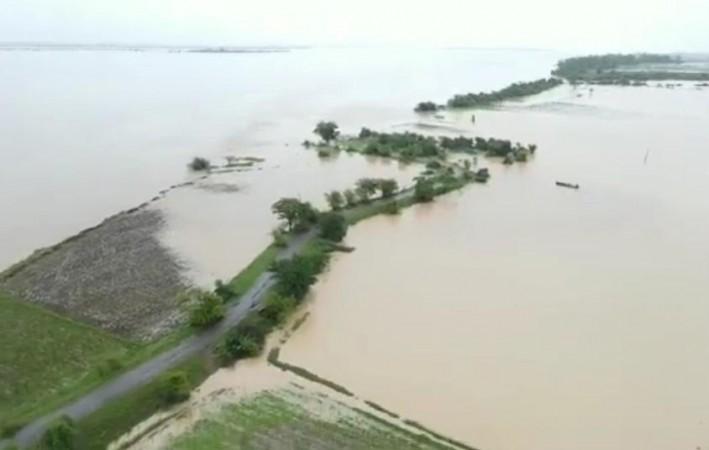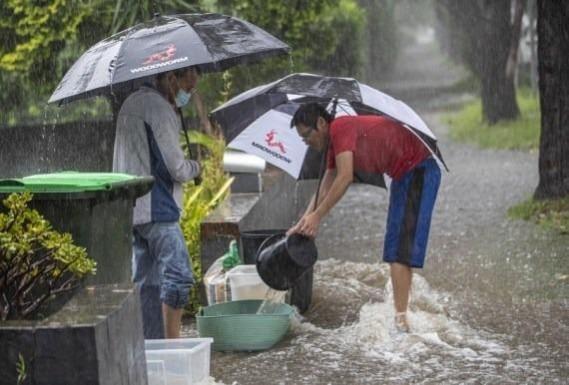The states of Punjab, Haryana, Himachal, Uttarakhand and Delhi have just been hit with ruthless floods in the past month. As per official figures, nearly 31,000 people over 10 districts are severely affected after the floods hit Assam in mid-June this year.
Before any meaningful conversation can be had on the need for a quick and responsive post disaster management system, we first need to address how prepared are the Indian cities for heavy monsoons time and again, each year.
The visual evidence of what the floods and heavy rains have done to the crops, cities and houses exists in plenty on social media. Floating cars, waterlogged drains, falling buildings, submerged cities and fields should be enough to put monsoon management on the election manifestos. Incessant rains will most likely hit us again next year. Probably, some other parts of the country too, as late monsoon, this year itself. How prepared are we?

Climate-induced disasters becoming increasingly common
As per a joint report by SEEDS and Centre for Research on the Epidemiology of Disasters (CRED) titled 'Decoding the Monsoon Floods', floods top the list of natural disasters since 2000. It further says that 56% of smart cities fall in high flood risk districts. The report analyzed disaster data from Bangladesh, India, Nepal and Myanmar between 2000 and 2017. The report also highlights the vulnerability of Indian cities and reveals that more than 2200 cities and towns in India are located in the districts that have witnessed at least 11 floods in the last 18 years.
Water-logging — causes and cures
Come monsoon and the urban landscape of pretty much any city is marred with sights of choked drains. People having to wade through knee-deep water is a common sight post rain. Despite solutions being both simple and small, they continue to evade us. Adequate pumping arrangements for low lying areas, proper maintenance of drainage systems, a stricter and effective ban on polythene, can all collectively tackle waterlogging in urban areas.
It is not possible to redesign the cities, remove all haphazard construction, or completely rehabilitate low lying areas, all these factors along with increasing urbanization have collectively intensified waterlogging. Experts advocate a multi-pronged approach, with greater emphasis on drainage systems equipped to handle the rainfall. Stormwater drains, which can play an integral role in reducing waterlogging, are almost always choked with municipal solid waste.
As per a survey conducted by social media platform LocalCircles, 94% of the 22,000 citizens located in 293 districts of India said that their city or district gets waterlogged during the monsoon season. The problem is widespread, the solutions are simple, yet the civic issue continues to exist.
Why is the existing infrastructure not nearly enough?
Experts have warned of the increasing need to identify critical infrastructure to better prepare for a flood-like situation. Once the critical infrastructure has been identified, it needs to be made disaster resilient, just so essential services and daily life are not impacted. Climate proofing is yet another term to have gained traction and attention of organizations recently. As per a report by the European Commission, "Climate proofing is a process that integrates climate change mitigation and adaptation measures into the development of infrastructure projects."
In October 2021, the Council on Energy, Environment and Water (CEEW) released a report which highlighted that more than 80 percent of India's population resides in cities highly vulnerable to hydro-met disasters with the southern zone being the most vulnerable. Experts say that there is a need to zero in on coastal areas, low lying areas and seismically sensitive areas near the river banks, stop haphazard construction and invest in resilient infrastructure.

As each state battles its own share of crisis and identifies causes, meanwhile in Punjab, irresponsible and unregulated construction close to the river beds has been identified as the key factor, according to the experts at National Institute of Hydrology (NIH) Roorkee.
Dr Anil Kumar Lohani, head of the surface water hydrology division at NIH said, "Heavy rainfall resulted in runoff that was more than the carrying capacity of the rivers." Highlighting how flood-plain areas of most rivers in the state have been encroached upon, he said, "It is crucial for the state to consider flood plain zoning." Storm water drainage plans, inflow forecasting for dams, are among the measures that the state needs to take urgently for torrential overflow.
Lessons galore from world over
Literally no place on Earth is immune to climate change. Studies citing the horrors of how so many areas in the world will be unlivable by 2050 are not few and far between. However, many cities in the world are better prepared to tackle the wrath of nature and climate change. As per Architecture and Design, Denver, Raleigh and Salt Lake City figure among the top ranking cities when it comes to climate readiness, with their emphasis on clean energy, social and governmental engagement to extreme weather.
In the meanwhile, there is heavy rain water triggering water logging in certain areas of Mumbai. Orange alert for heavy to very heavy rainfall has already been issued by the MET department. Telangana is likely to experience very rainfall too. The rains will repeat themselves, unfortunately, sooner or later, floods will reappear too. However, we need not repeat the infrastructural blunders.

















